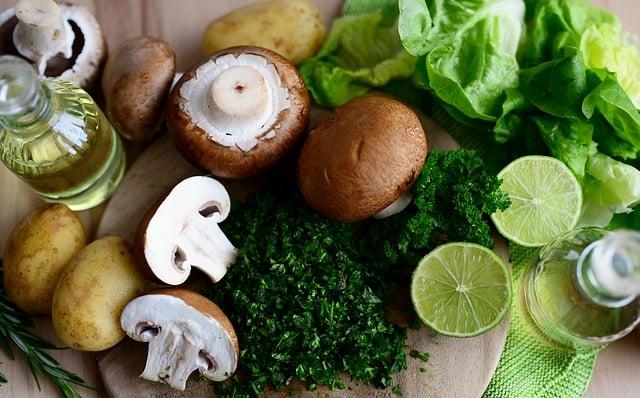Embarking on a journey to simultaneously gain muscle and lose fat can feel like a daunting task, but with the right approach to meal planning, it’s entirely achievable. Welcome to your comprehensive guide on how to strategically fuel your body for optimal muscle growth while shedding unwanted fat. In this article, we will demystify the complexities of nutrition and provide you with a clear, actionable plan to align your diet with your fitness goals. With expert insights and practical tips, you’ll learn how to balance macronutrients, time your meals, and select the right foods to maximize your results. Let’s take the guesswork out of meal planning and empower you with the knowledge to transform your body effectively and sustainably.
Understanding Nutritional Needs for Muscle Gain and Fat Loss
Achieving the right balance between muscle gain and fat loss requires a strategic approach to nutrition that considers both macronutrients and timing. Protein is the cornerstone of muscle growth, so prioritize lean sources like chicken, fish, tofu, and legumes. Aim for a protein intake of about 1.6 to 2.2 grams per kilogram of body weight daily. Carbohydrates are equally crucial as they fuel your workouts and aid in recovery. Opt for complex carbs such as quinoa, brown rice, and sweet potatoes to maintain steady energy levels. Don’t forget healthy fats, which play a vital role in hormone production and overall health; include sources like avocados, nuts, and olive oil.
- Prioritize protein: Lean meats, fish, legumes.
- Choose complex carbs: Quinoa, brown rice, sweet potatoes.
- Incorporate healthy fats: Avocados, nuts, olive oil.
Timing your meals is just as important as the content. Pre- and post-workout nutrition should focus on protein and carbs to maximize muscle repair and growth. A protein shake with a banana can serve as a quick post-workout fix. Additionally, meal frequency plays a role in managing hunger and energy levels; aim for five to six smaller meals throughout the day to keep your metabolism active. Remember, consistency is key, and tracking your intake can provide valuable insights into your progress.

Crafting a Balanced Meal Plan to Optimize Results
Achieving your fitness goals requires a meal plan that is as strategic as your workout routine. A well-balanced plan for muscle gain and fat loss should include a combination of macronutrients and nutrient-dense foods that support your body’s needs. Start by ensuring that each meal includes a source of lean protein such as chicken, fish, or tofu, which is crucial for muscle repair and growth. Complement these with complex carbohydrates like quinoa, sweet potatoes, or whole grains to fuel your workouts and maintain energy levels.
Don’t forget the power of healthy fats such as avocados, nuts, and olive oil, which are essential for hormone production and satiety. Additionally, make room for plenty of vegetables in your meals, as they are rich in vitamins, minerals, and fiber. Consider these components when planning your meals:
- Breakfast: Scrambled eggs with spinach and whole-grain toast
- Lunch: Grilled chicken salad with mixed greens and avocado
- Dinner: Baked salmon with quinoa and steamed broccoli
- Snacks: Greek yogurt with berries or a handful of almonds
By following these guidelines, you’ll be able to craft a meal plan that not only supports muscle gain but also aids in fat loss, optimizing your overall fitness results.

Incorporating High-Protein Foods and Healthy Fats
To achieve your muscle gain and fat loss goals, it’s crucial to focus on foods that provide both high-quality protein and healthy fats. Proteins are the building blocks for muscle, while fats play a vital role in hormone production, including testosterone, which is essential for muscle growth. When planning your meals, consider incorporating a variety of protein sources such as:
- Lean meats like chicken, turkey, and lean cuts of beef.
- Fish and seafood, particularly fatty fish like salmon and mackerel, which also offer omega-3 fatty acids.
- Plant-based proteins such as lentils, chickpeas, and tofu for a balanced diet.
- Dairy products like Greek yogurt and cottage cheese for an extra protein punch.
Complement these proteins with healthy fats to optimize energy levels and support metabolic functions. Integrate sources such as:
- Avocados, which are rich in monounsaturated fats and can easily be added to salads and smoothies.
- Nuts and seeds, providing essential fatty acids and a crunchy texture to meals.
- Olive oil and coconut oil as healthier cooking alternatives.
- Nut butters for a convenient and tasty fat source.
Balancing these components in your diet will not only help you build muscle but also enhance fat loss, contributing to a healthier and more toned physique.

Timing Your Meals for Maximum Muscle Growth and Fat Reduction
Achieving the ideal balance between muscle growth and fat reduction often hinges on not just what you eat, but when you eat it. Strategic meal timing can be your secret weapon in maximizing muscle gains while simultaneously shedding unwanted fat. To harness the full potential of your diet, consider the following guidelines:
- Pre-Workout Fuel: Consume a meal rich in complex carbohydrates and lean proteins about 1-2 hours before your workout. This provides your muscles with the necessary energy to perform optimally and supports recovery.
- Post-Workout Recovery: Within 30 minutes to an hour after exercising, focus on a mix of proteins and fast-digesting carbs. This helps replenish glycogen stores and kickstarts the muscle repair process.
- Consistent Protein Intake: Spread your protein consumption evenly across meals. This consistent intake ensures a steady supply of amino acids, crucial for muscle repair and growth.
- Nighttime Nutrition: Consider a small, protein-rich snack before bed. This can prevent muscle breakdown during the overnight fasting period and support recovery.
By aligning your meal schedule with your body’s natural rhythms and activity levels, you can enhance your body’s ability to build muscle and burn fat efficiently.




